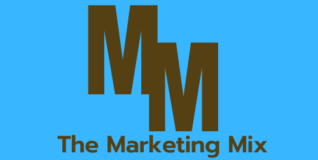Influencer marketing has seen a significant rise in recent years, jumping from a 1.7 Billion dollar industry in 2016 to a massive 16.4 Billion dollar industry in 2022. With more and more brands turning to social media influencers to promote their products and services. This trend is reflective of wider shifts in marketing strategies, as brands look for new ways to connect with consumers in the digital age.
One of the main reasons for the rise of influencer marketing is the increasing importance of social media in people’s lives. With more and more people spending time on platforms like Instagram, TikTok, and YouTube, brands have recognized the potential of social media influencers to reach their target audiences. Influencers are seen as credible, relatable figures who have built up a following of loyal fans. By partnering with these influencers, brands can tap into that following and the innate trust influencers have built with their audience which helps their brand resonate than they would be able to through traditional advertising methods.
Another reason for the rise of influencer marketing is the growing skepticism among consumers towards traditional advertising. With the rise of ad-blockers and the increasing use of streaming services that allow users to skip ads, traditional advertising methods are becoming less effective. Consumers are also becoming more savvy and are able to quickly spot when they are being sold to. In contrast, influencer marketing is seen as more authentic, as influencers are promoting products or services that they are perceived to genuinely like and use.
Additionally, influencer marketing is also more cost-effective than traditional advertising methods. Instead of spending a large amount of money on a national ad campaign, brands can work with a range of influencers at different price points to achieve a similar reach. This has become even more flexible with the affiliate model which comes with a smaller (or no) upfront cost to the advertiser. Instead, the influencer is paid for the amount of incremental business/sales they drive for the brand which can be incredibly lucrative on both ends.
Influencers at the top of the food chain are able to go beyond brand partnerships and launch their own brands, some which have seen massive success such as Mr Beast’s, Beastburger business or the partnership with Logan Paul & KSI to launch Prime Hydration. Both of these businesses have taken off with massive growth trajectories within industries flooded with competition from major established players in the space. This showcases the growing power of influencers in marketing and is likely just the beginning.
In the coming years we can expect to see multiple billion-dollar businesses being built by influencers leveraging the scale and trust of their audience as well as increased adoption from major brands to leverage the power of this influence. When creating marketing strategies, this is a tactic to keep top of mind for the foreseeable future.
